This article is about the trial. Read more about the bus on revenue service at the Hino Blue Ribbon City Hybrid article.
A Hino Hybrid Bus was trialled in Medini City near Johor Bahru from September 2017, the first hybrid bus to enter service in Malaysia.
On 15 June 2017, a Memorandum of Understanding (MOU) between Mitsui, Medini Iskandar Malaysia (MIM), Hino Motors Sales Malaysia and Handal Indah was signed, paving the way for the hybrid bus trial. Initially, Mitsui and MIM invited Hino to conduct a trial run of the hybrid bus.
The bus was slated to enter passenger service trials for five months beginning from July 2017, but began service in September 2017 instead. Operated by Handal Indah (Causeway Link), the bus will ply six routes in total, starting with the Iskandar Puteri route that connects Larkin Sentral Bus Terminal to Puteri Harbour Ferry Terminal via Medini.
The introduction of hybrid buses and the promotion of public transport are in line with Iskandar Malaysia’s ‘Low Carbon Society Blueprint’ which aims to reduce carbon emissions in Iskandar Malaysia by 58 percent by 2025. Currently, the ratio of private vehicle users to public transport users is 85:15 for every 100 people in Iskandar Malaysia, and the authorities are hoping to encourage greater public transport usage.
The trial ceased in 2018.
The Bus:
The trialled bus is a Hino Blue Ribbon City Hybrid (model Hino Hybrid HU8J) built to Japanese specifications. The same unit was previously trialled in Bangkok by the Bangkok Mass Transit Authority from June to November 2016, but fitted with a Liquefied natural gas (LNG)-powered engine.
The bus is powered by Hino J05E (Euro 3) diesel engine and a parallel hybrid system. It has the advantage of improved fuel efficiency with the combined use of the internal combustion engine (ICE) and electric motors within its powertrain system, hence reducing CO2 emissions for greater eco-friendliness. In the future, hybrid vehicles such as the Hino Hybrid Bus have the potential to be sold as Energy Efficient Vehicles (“EEV”), which may reduce taxes bus operators if tax exemptions are introduced.
The diesel hybrid bus requires no charging stations and is said to last up to 15 years. A smaller version, the Hino Rainbow, is also sold by Hino.
Specifications
The Hino Blue Ribbon Hybrid Bus was first launched in January 2005, with its latest version launched in December 2015. The unit trialled in Medini, a Hino Hybrid HU8J, features a diesel engine (Euro III) paired with an automated manual transmission and an upgraded hybrid powertrain, featuring 90 kW permanent magnet AC motors.
The bus relies on a parallel hybrid system, running on both diesel and electricity. In a parallel hybrid drivetrain, the combustion engine and the electric motor are connected to the transmission independently. Electricity is generated during cruising and regenerative braking and stored in onboard nickel–metal hydride batteries.
By combining the power output from the engine and electric motor during periods of high energy demand (e.g. while accelerating from stationary or going up hills), less strain is put on the combustion engine, hence lowering fuel consumption and emissions.
The hybrid bus is also designed with air suspension for improved ride comfort, and the low-entry chassis offers easy access for passengers. It also has the flexibility for special needs and is able to cater capacity of up to 75 including standing passengers.
While the Hino Blue Ribbon Hybrid Bus is offered with the A05C-K1 4-cylinder engine which is compliant with Japan’s 2015 Diesel Emission Standards (similar to Euro VI emission standards, but slightly less stringent), the unit delivered to Malaysia is fitted with a Euro III compliant engine (model currently unknown). This is likely due to the lack of Ultra-low-sulfur diesel (ULSD) availability in Malaysia, which hampers the rollout of vehicles with higher emission standards (i.e. Euro IV and above) which require ULSD to achieve high emission ratings.
Main article: Hino Blue Ribbon City Hybrid
Exterior:
The bus is built exactly to Japanese specifications.
On the front and side, large Electronic Display Signage (EDS) units typical of Japanese-spec buses are used. A small viewing window near the front doors gives drivers a better view of the kerb. The front doors are inward-swinging leaf doors, while the rear door is a sliding door. Nickel–metal hydride batteries for the hybrid system are located on the roof of the bus.
The wheelchair ramp is stored in a compartment next to the exit door of the bus. An interesting feature to note is the LED lamps on top of the exit door, and a door edge sensor mounted on the outside of the rear door.
At the rear of the bus, an additional electronic sign on the engine cover displays the Japanese characters “乗降中”, which indicates that the bus is in the midst of boarding and alighting passengers, for the benefit of other motorists who may be temporarily obstructed by the stationary bus. This feature is present in buses for the Japanese domestic market.
Interior:
The interior layout is typical of Japanese-spec buses, with large windows and good head clearance up to the rear of the bus. Plush seats are used across the bus for greater passenger comfort. The low-entry design allows for ease of access by the less mobile, accompanied by a wheelchair ramp at the rear door for passengers-in-wheelchair.
This bus contains a large proportion of single seats for greater standing room, allowing for ease of passenger movement over seating capacity. This particular layout is marketed by Hino as a ‘Rush type’ (ラッシュ型). Other variants offered by Hino have more double seats and a smaller wheelchair bay/standing area.
In addition, the standing area is fitted with four foldable single seats, and also functions as a wheelchair bay. Metal mounting brackets on the floor are intended for special belts that can be used to secure a wheelchair in place and requires the assistance of the bus driver to set them up. It remains to be seen if wheelchair accessibility features will be offered during the trial.
Driver’s Cab
Once again, built to Japanese specifications little modifications. The handbrake and gear selectors are located on the left, rather than on the right for most right-hand-drive heavy vehicles.
Closely examining the side switches, one can identify the presence of a heater which is typical of Japanese-spec buses but otherwise of no use in tropical climate regions such as Malaysia. They are indicated by the middle two dials, underneath the top row of switches.
Gallery:
Other Diesel Hybrid buses:
External Links & References:
- Hino Motors releases “Hino Blue Ribbon City Hybrid” – Hino Motors
- Hino hybrid bus to undergo test runs along public bus routes in Bangkok
- HINO Hybrid LNG-HU8JLGP – Bangkok Bus Club
- Hino Blue Ribbon – Hino Motors Japan
- Hybrid buses to ply the roads at Johor’s Medini City – Yahoo News
- Truck & Bus News: HINO Hybrid Bus begins trial runs in Medini, Johor – Motoring Malaysia Blog
- Images credit to Malaysia Automotive Institute (Facebook Page)
Back to Bus Articles
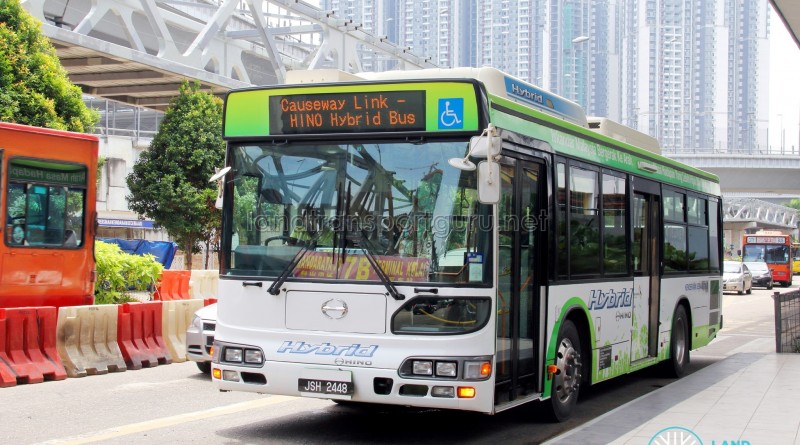


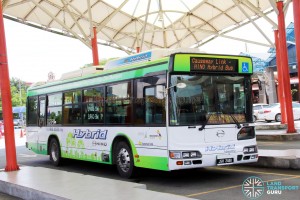

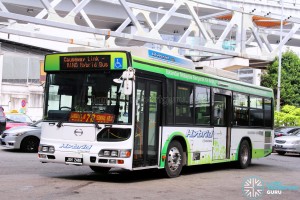
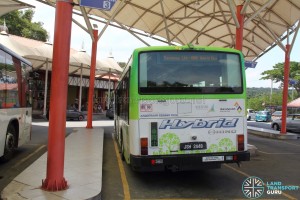
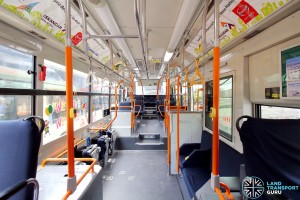

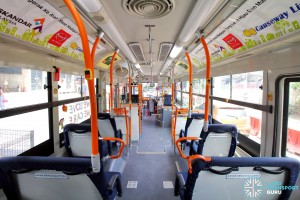
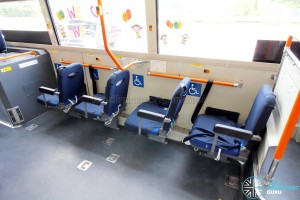
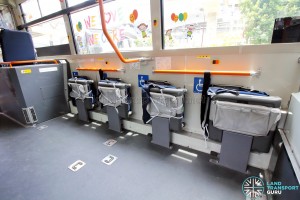
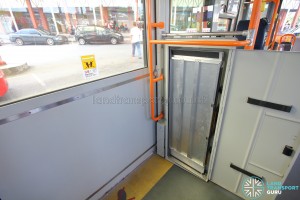
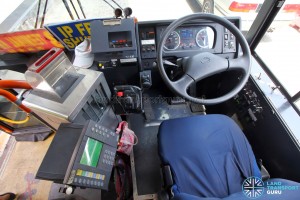

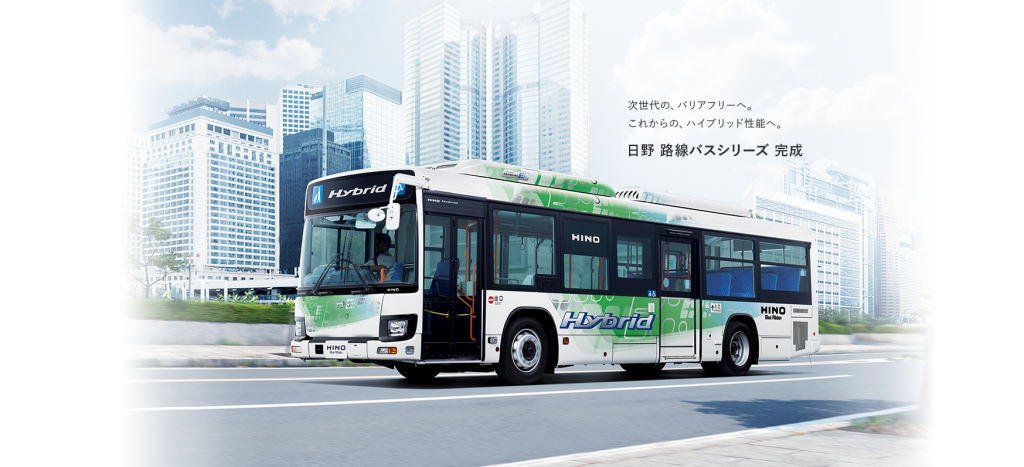
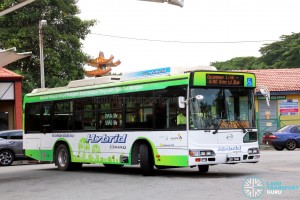
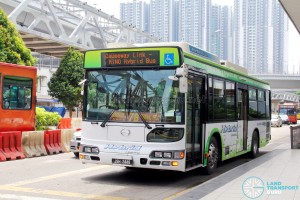
When is the exact date to be debut on? And what is the bus service?
Looks a bit like classic buses